Calla lilies (Zantedeschia spp.) are elegant and iconic flowers known for their graceful form and distinctive appearance. These flowers, native to southern Africa, have become popular choices for weddings, bouquets, and floral arrangements due to their timeless beauty. In this article, we will explore the captivating world of calla lilies, examining their characteristics, symbolism, care requirements, and cultural significance.
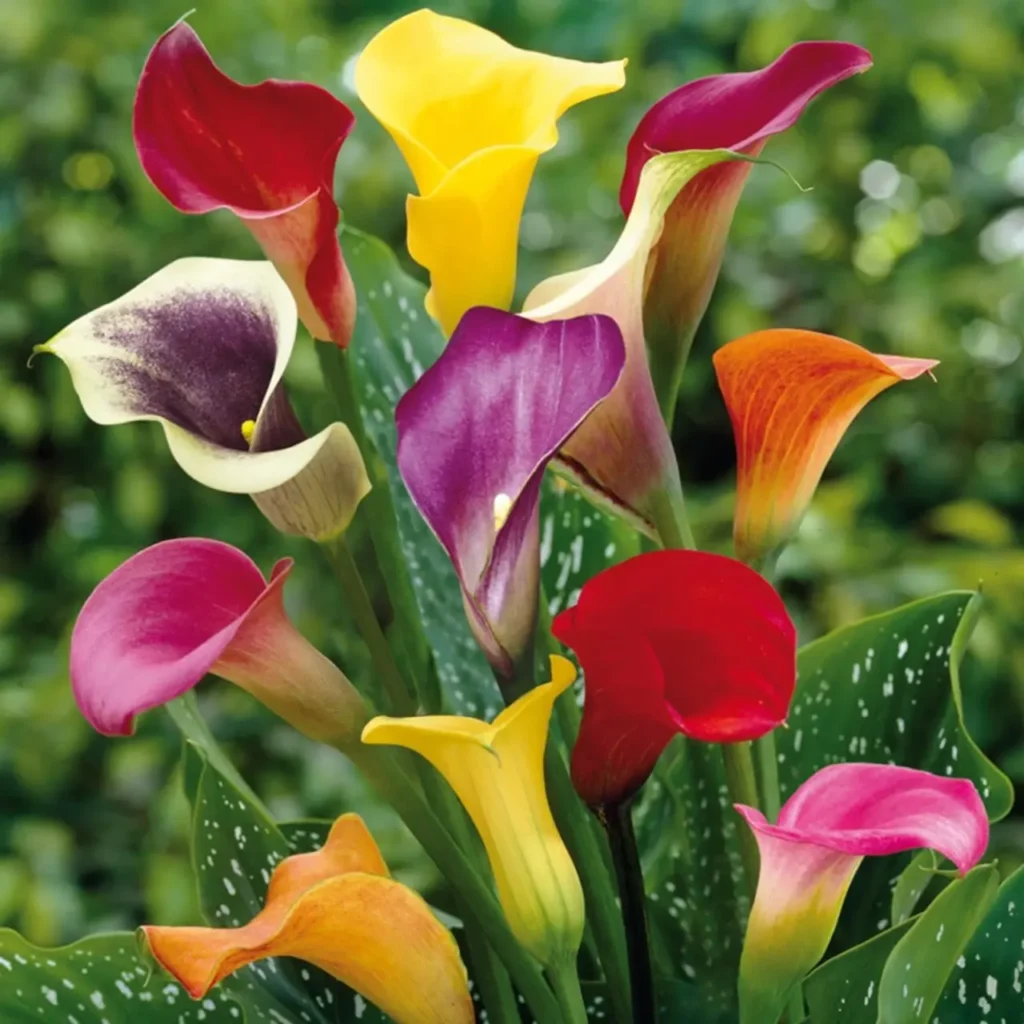
Appearance and Characteristics
Calla lilies are herbaceous perennial plants that feature large, trumpet-shaped flowers with a single petal called a spathe. The spathe is usually white or cream-colored, but there are also varieties in shades of pink, yellow, orange, and even dark purple. It curves inward to form a graceful funnel shape, while the spadix, a central column, rises from the center of the spathe and is often yellow or green. The combination of the elegant spathe and prominent spadix gives calla lilies a striking and sophisticated appearance.
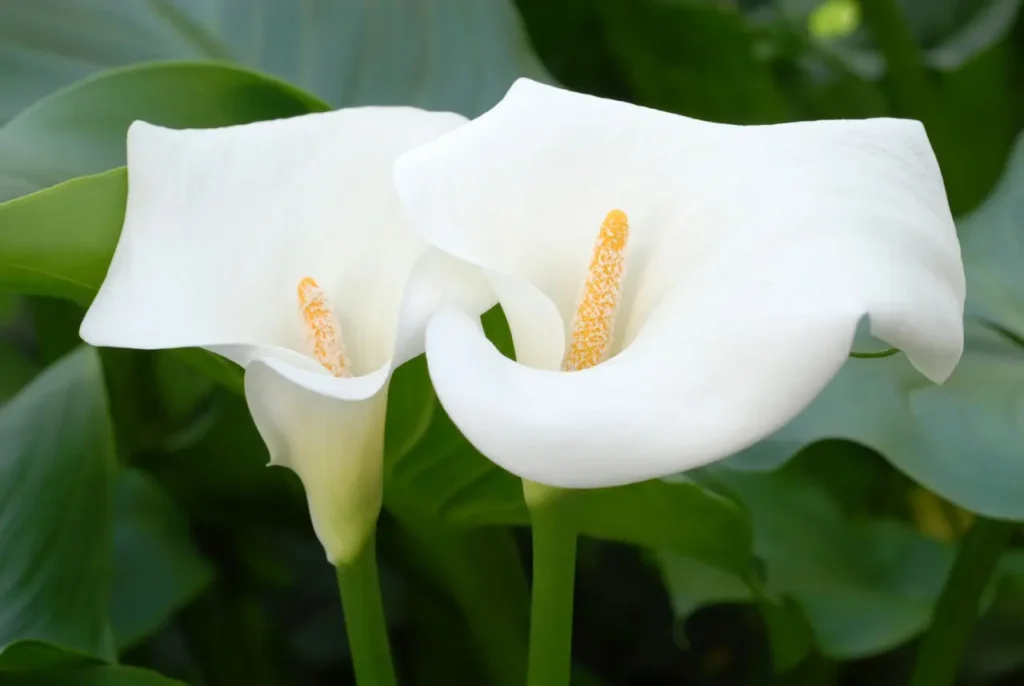
Symbolism and Cultural Significance
Calla lilies have a rich symbolic history and are associated with various meanings across different cultures. In general, they are often associated with purity, beauty, and rebirth. They are frequently used in weddings, symbolizing innocence, purity, and the union of two individuals in marriage. In some cultures, calla lilies are believed to bring good luck and are used in religious ceremonies and rituals. Their elegant form and alluring beauty have made them popular choices for floral arrangements, adding a touch of sophistication and elegance to any occasion.
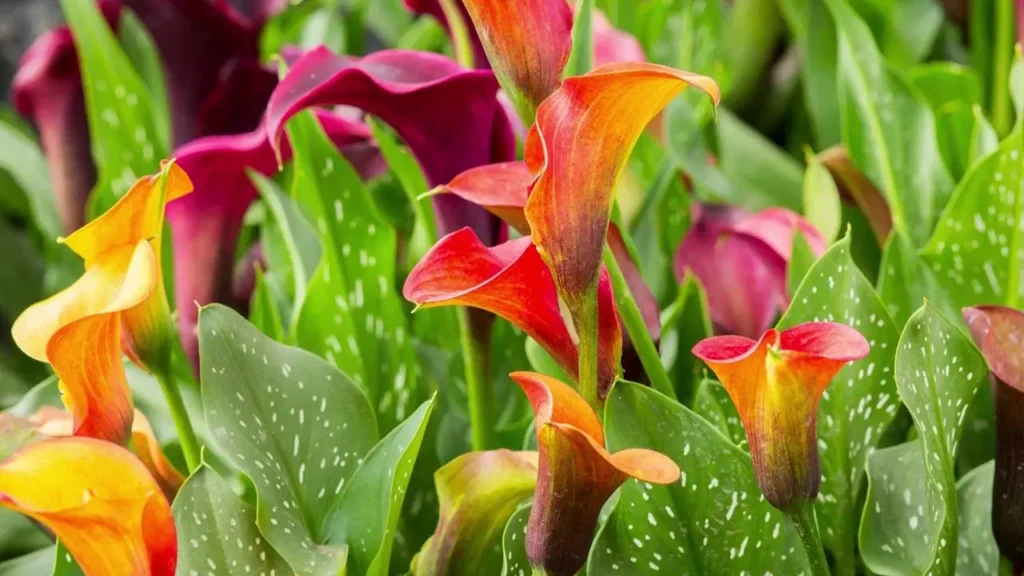
Care Requirements
Growing calla lilies can be a rewarding experience, whether in gardens or as potted plants. Here are some care tips to ensure their well-being:
- Light: Calla lilies thrive in bright, indirect light. They prefer full sun in cooler climates but benefit from partial shade in hotter regions.
- Temperature: These flowers prefer moderate temperatures between 60°F and 75°F (15°C and 24°C). Protect them from extreme heat or frost.
- Watering: Keep the soil consistently moist but not waterlogged. Water thoroughly when the top inch of soil feels dry.
- Soil: Well-draining soil is essential for calla lilies. A mixture of peat moss, compost, and perlite or sand works well.
- Fertilizer: Feed calla lilies with a balanced, water-soluble fertilizer once a month during the growing season.
- Dormancy: Calla lilies have a natural dormant period. Reduce watering and allow the foliage to wither naturally. Store the bulbs in a cool, dry place during dormancy.
- Propagation: Calla lilies can be propagated through division or by planting bulbs. Dividing the rhizomes every few years helps rejuvenate the plants.
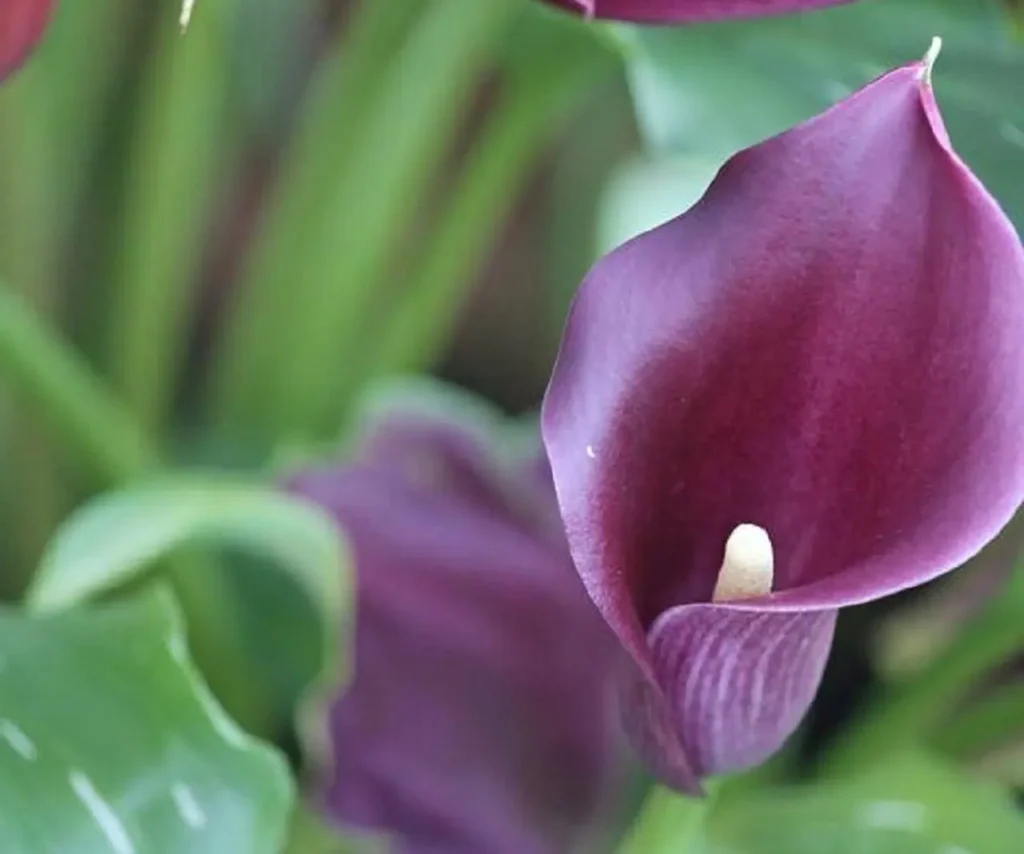
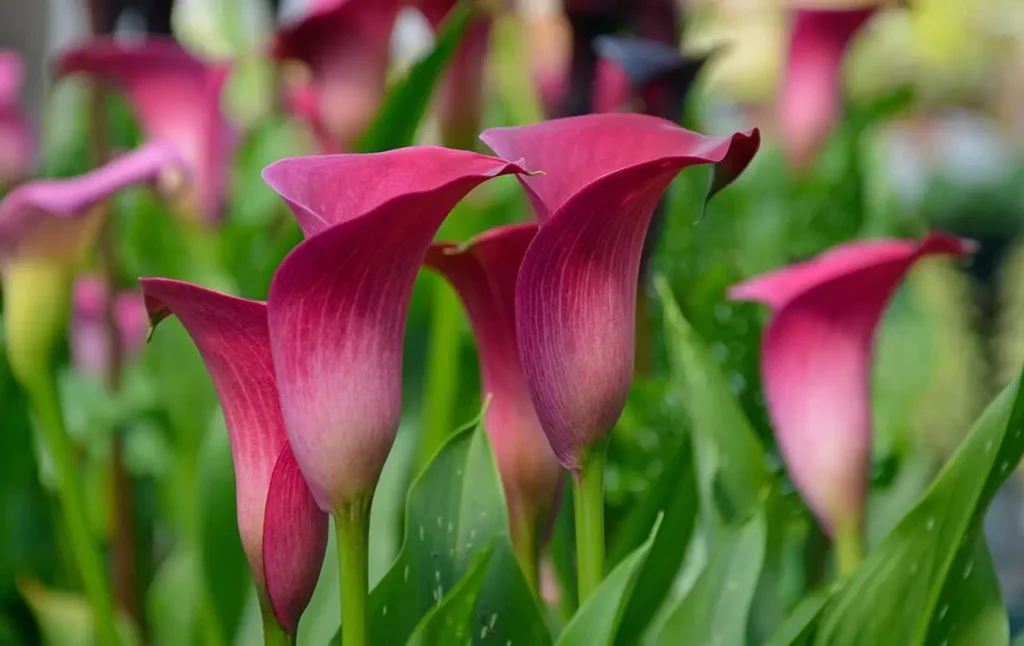
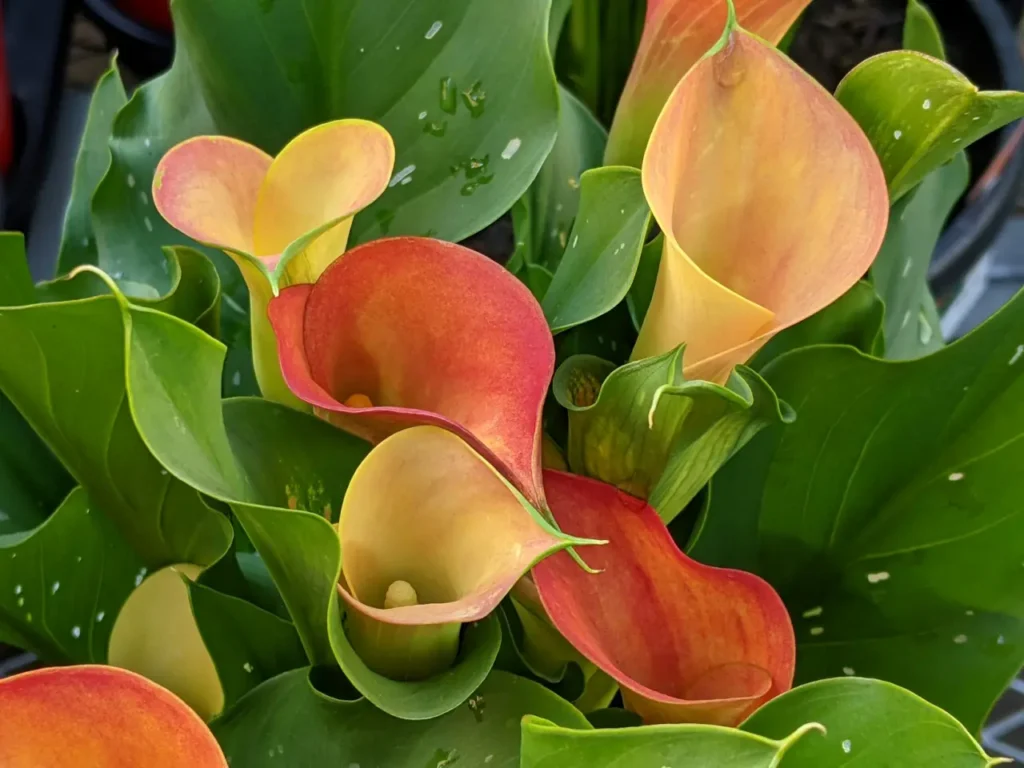
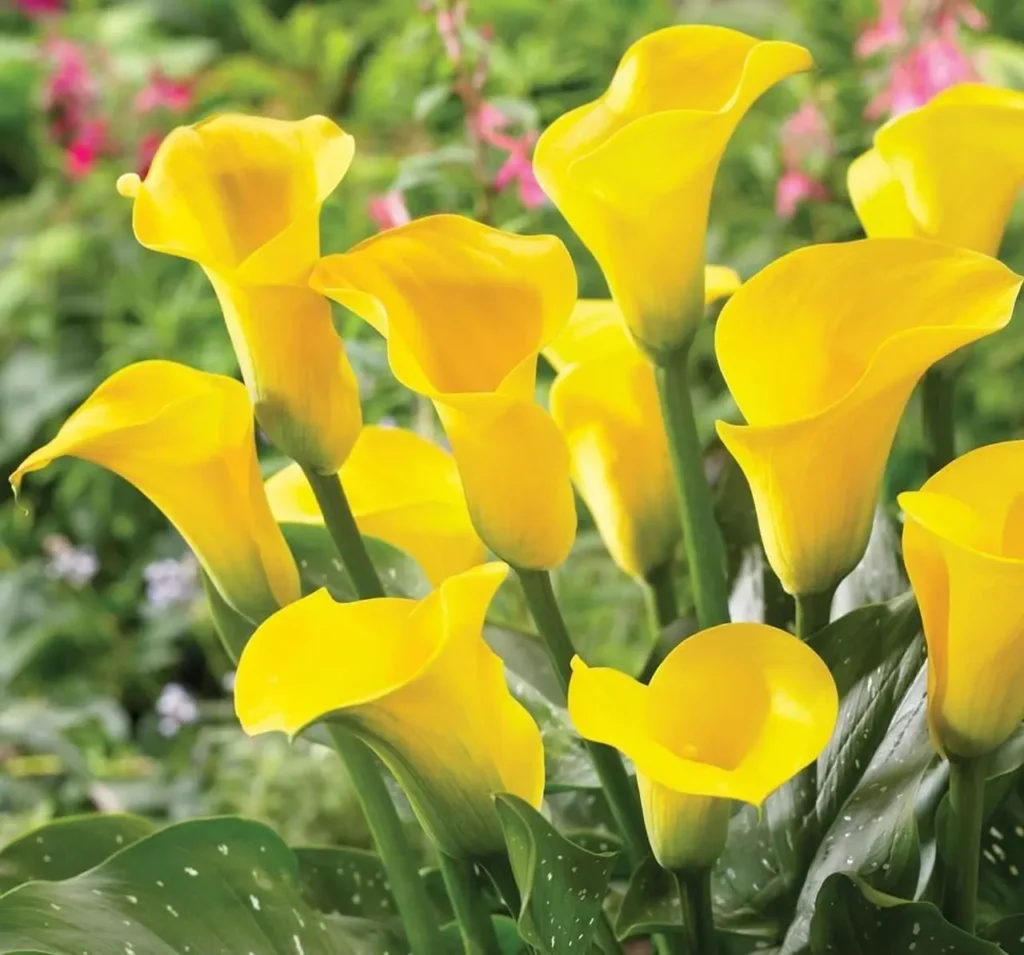
Calla lilies are exquisite flowers that embody elegance and grace. With their trumpet-shaped blooms, range of colors, and deep symbolism, they have become beloved by floral enthusiasts and gardeners alike. Whether adorning a bridal bouquet or adding charm to a garden, calla lilies are sure to captivate with their timeless beauty. By providing the right conditions and care, these enchanting flowers will continue to bring joy and elegance to both indoor and outdoor spaces.